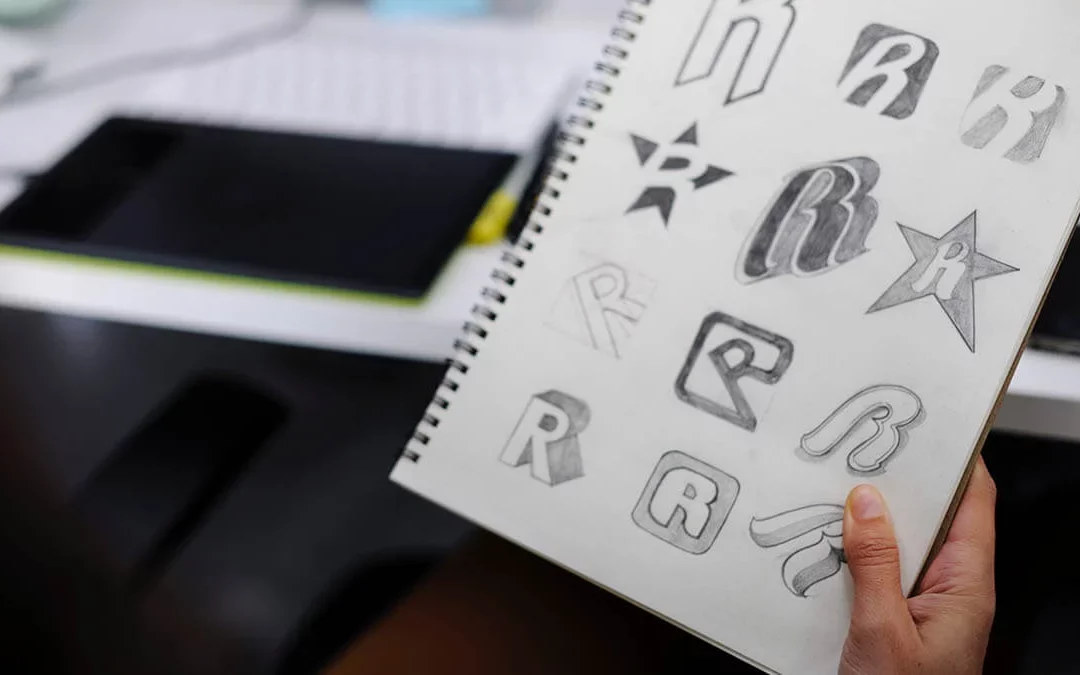In the cut-throat competition of the modern-day business landscape, your brand should not only stand out but also establish an immediate connection with your audience. In the first few seconds of encountering it, your logo should convey crucial aspects of your brand.
When crafting a logo, you’ll need to consider design symbolism and how various images, colors, and designs can be employed to define your brand effectively.
A remarkable logo relies on symbolism to set expectations for your audience and ensure your brand remains memorable. In this blog, we’ll explore the role of symbolism in logo design, offering examples of symbols you might consider incorporating into your own logo.
What is Symbolism?
Symbols have been used by humans for thousands of years to convey ideas and communicate. Think of ancient Egyptian hieroglyphics or the simple symbols etched on cave walls depicting animals and hunting scenes.
In our modern world, symbols are all around. They typically convey ideas swiftly, from the color and shape of street signs to emojis or restroom symbols. Symbols guide our expectations in everyday life, and the same holds true for symbolism in graphic design.
How Symbolism is Employed in Graphic Design
Graphic designers utilize various symbols that can instantly convey a concept. Design symbolism helps communicate characteristics, services, products, and more. Brands harness symbolism to convey aspects of their company, both directly and subliminally.
Logos are miniature representations of your entire brand. They are compact graphics designed to be memorable and easily understood. Utilizing symbolism in logo design allows for the rapid and effective communication of your brand’s design elements to your target audience. These symbols encompass choices in shapes, colors, icons, and more.
Here’s how to make the most of symbolism when designing your logo:
Define Your Brand:
Begin by clearly defining your brand’s concept. Understand your objectives and what sets you apart from competitors. This involves identifying your brand’s characteristics, pillars, and voice.
Know Your Audience:
Understanding your logo’s viewers is critical. Different groups, cultures, and religions may interpret symbols differently. It’s important to be aware of the message you are conveying to your target audience.
Logo History:
Be mindful of logo similarities with other brands, which can cause confusion and unintentional symbolism. Ensure your logo stands out and communicates the desired message effectively.
How Logo Symbolism Changes with Style
For first-time logo designers, consider creating a list of colors, fonts, and objects that align with your brand’s characteristics. Then, narrow down your options by selecting those that resonate with your audience and differentiate your brand from others.
Moreover, you can enhance your symbolism by considering the style you choose. An owl, for instance, symbolizes intuition and wisdom. A blocky, bold-colored owl suggests modernity and tech-savviness, whereas a realistic owl conveys tradition and down-to-earth qualities. Both styles convey excellence and insight but appeal to different audiences, implying distinct brand characteristics.
Hence, symbol selection extends beyond merely choosing an object; it encompasses the style and color palette employed. The ideal logo appears simple yet reflects careful consideration of the feelings it subconsciously evokes at first glance.
Examples of Symbolism in Logo Design
Symbolism in logo design encompasses various areas, with each symbol carrying its own meaning. Here are examples of specific types of symbols and their implications:
Animal Symbolism:
Animals are popular symbols in logos, offering personalization without limiting your brand to a specific audience. Here are some commonly used animals in logos and their associated meanings:
- Butterfly: Represents change, transformation, flexibility, and creativity. It can symbolize beauty and peace.
- Owl: Signifies intuition and wisdom, showcasing expertise or knowledge.
- Swan: Epitomizes beauty, elegance, maturation, and growth.
- Lion: Embodies strength, courage, justice, and power, ideal for representing tenacity or industry influence.
Floral Symbolism:
Plants and flowers symbolize life, hope, and growth. Specific plants offer additional meaning. Here are some frequently used plants in logos and their symbolism:
- Olive Branch: A symbol of peace and hope, extending goodwill.
- Red Rose: Signifies love and passion, with color variations conveying different emotions.
- Trees: Symbolize life, growth, prosperity, and value, with various tree types carrying unique meanings.
- Daisy: Symbolizes friendliness, goodness, and harmony, making it suitable for various industries.
Geometric Symbolism:
Modern brands often opt for geometric shapes in logos. These shapes carry their own symbolism. Here are some geometric shapes and their meanings:
- Circles: Represent unity, wholeness, and longevity.
- Triangles: Signify power or delicate balance, with point-up triangles symbolizing stability and point-down triangles representing femininity.
- Squares: Convey stability, reliability, and predictability.
Celestial Symbolism:
Celestial symbols have held meaning across cultures for centuries. Here are some celestial symbols and their connotations:
- Star: Represents perfection, good luck, fame, or navigation. Different star shapes carry distinct meanings.
- Sun: Signifies clarity, power, and vitality, reflecting a brand’s positive influence.
- Moon: Offers balance, renewal, and mystique, appealing to brands with unique, enigmatic qualities.
Color Symbolism:
Colors add significant meaning to logos. The choice of color, along with its shade or tint, influences logo symbolism. Here are some common colors and their interpretations:
- Red: Vibrant and attention-grabbing, symbolizes passion, excitement, and energy.
- Blue: Signifies wisdom, loyalty, and sophistication, making it a popular choice for diverse brands.
- Green: Represents nature, health, growth, and prosperity, ideal for eco-conscious or financial brands.
- Yellow: Radiates friendliness, cheerfulness, and energy, often used to capture attention.
- Black and White: Conveys power, trust, and straightforwardness, offering versatility and simplicity.
Conclusive thoughts:
When creating a logo, choosing the right symbolism and design elements without overcomplicating it can foster a meaningful connection between your logo and your brand’s essence. The more your logo can swiftly communicate your mission and values, the easier it becomes to connect with your target audience. Symbols are powerful tools for effective communication.
If you need assistance in designing your logo, Doers’ branding services are all you need. Our branding strategies can help you create and maintain a consistent and distinct image for your brand. From the brand’s name and logo to messaging and overall aesthetic, we’ve got everything covered. We’re also the leading OOH agency in Cairo, which makes us your number one choice when it comes to branding, marketing, and advertising. Get in touch to learn more!

